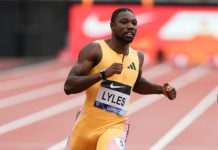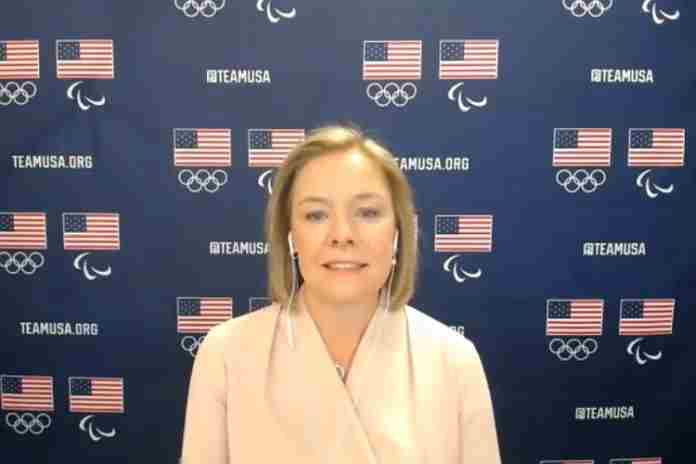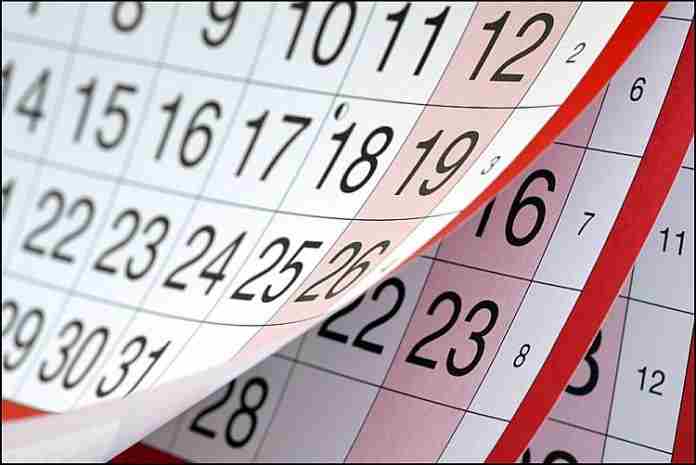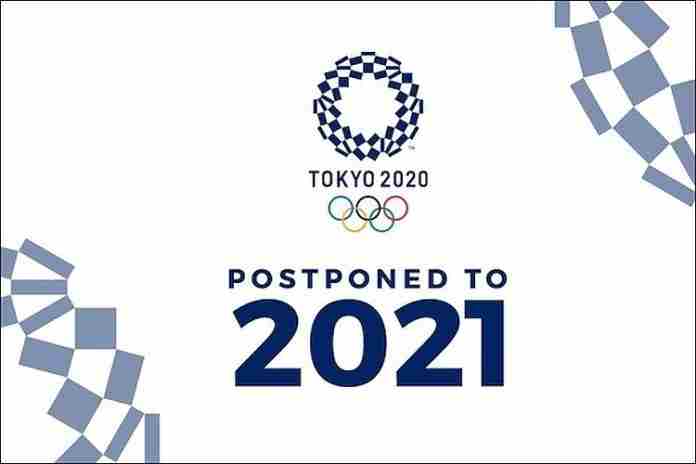(★ Friends: Thank you once again for your 69 contributions, to cover our semi-annual server and support costs. The next bill comes in December. If you would like to help, please donate here. Your inspiring enthusiasm is the reason this site continues. ★)
(● For our 526-event International Sports Calendar from October 2020 to June 2021,
by date and by sport, click here! ●)
The annual U.S. Olympic & Paralympic Assembly opened online on Thursday with remarks from U.S. Olympic & Paralympic Committee Board Chair Susanne Lyons and chief executive Sarah Hirshland, both of whom offered lists of accomplishments, but outlined many more challenges ahead
The 40-minute opening session also included comments from U.S. Biathlon chief Max Cobb, head of the U.S. National Governing Body Council, and Han Xiao, the head of the USOPC Athletes Advisory Council.
(The prepared remarks of Lyons and Hirshland are available here; quoted comments that follow are based on transcription of the live addresses.)
Lyons spoke first, noting the financial pressure brought on by the pandemic:
“Collectively, we had to make some very difficult budget decisions, but we did so with the knowledge that we needed to adapt or face more serious outcomes up the road.
“Despite significant cuts, her team strove to keep the majority of NGB and athlete support funding intact and have added resources for important areas like athlete mental health and training support during this pandemic.”
The only mention of the just-passed S. 2330, the “Empowering Olympic, Paralympic and Amateur Athletes Act of 2020″ skipped any mention of possible conflicts with the Olympic Charter:
“The Bill ensures that the governance structure of Olympic and Paralympic sports in the United States will receive renewed oversight aimed at protecting young athletes from abuse. It also calls for an oversight commission charged with a top-to-bottom examination of the USOPC and the 1978 Amateur Sports Act. It aims to increase athlete representation in governing bodies, and calls for more funding and independence for the U.S. Center for SafeSport. …
“We worked with the bill sponsors to address concerns, give input, and help ensure that actions recommended and entered into by the legislation would serve the intended purpose. We are satisfied with the collaborative process, and we support this legislation.”
Lyons also spoke of the continuing court actions over the Nassar abuse scandal, wrapped up in the bankruptcy proceedings of USA Gymnastics:
“Yet no measure of true progress related to the safety of Team USA athletes is complete without mentioning the ongoing mediation with the Nassar victim and survivor community. We remain steadfast in our resolve to reach a fair and equitable settlement with the survivor groups, and we regret that the process has gone on this long, and that the complexities of this type of mediation have delayed resolution for the athletes and their families, and we hope there will be closure before year-end.”
Perhaps her most interesting comments concerned the role that the USOPC sees for itself in the current world of sport:
“[W]e also need to be very aware of our role in the global sport environment. It’s no secret that the world is looking to us to lead. The USOPC and NGBs have an important role to play, but our reputation as a country internationally is at times complicated.
“We’ve worked very hard to cultivate relationships with international leadership. Through collaboration, we earn trust and respect, and we build consensus. And, we pledge to working tirelessly with our international colleagues as we advance critical topics such as anti-doping, athlete compensation through Rule 40 and athlete demonstration through Rule 50 all in the very near term. …
“Much of the work internationally is the work of diplomacy. Just because it is not always conducted publicly or spotlighted in the media, does not mean that significant negotiations and advocacy are not occurring.”
Hirshland echoed some of the same themes, but also recognized a key goal for the future: that to do all of the things needed, the USOPC and the National Governing Bodies are going to need more money:
“We should also celebrate the collective support this community has shown for those who have suffered financial hardships.
“Our national sport organizations, while faced with their own untenable revenue loss, have stepped in to help their clubs and membership and athletes so that local and grassroots sport development can continue.
“And as our Team USA athletes’ earning opportunities vanished, many organizations jumped in to help. International Federations, NGBs and the USOPC all rose to the occasion.
“And this is just the start, because, simply put, we need to find more ways to expand in order to support and drive all the aspirations we have for sport in this country.
“We need to channel our energy into discovering and implementing new ideas, and collectively finding ways to grow the pie – to infuse more money into the Olympic and Paralympic movements.”
Her comments further went on to focus on what needs to happen:
“We know where the barriers to participation exist. We need access to sport for all, safety, fragmentation in sport administration, adequate funding and infrastructure.
“And we know that combined, these barriers are putting intense pressure on participation and sport development. And as we are seeing firsthand, the pipeline is at risk – from grassroots youth programs to the NCAA – and with it, the sustainability of elite sport in this country
“But just as we know where the barriers exist, we can articulate a roadmap to attack them. …
“We need to think differently – more creatively – about funding sources and how to ensure that we have the resources required to set the global standard for excellence in sport.”
Athletes Advisory Council chair Xiao welcomed the changes in attitude within the U.S. Olympic Movement and the promise this can bring for the future:
“Out of all our accomplishments this far, I’m most proud that as a Movement, we have seen a profound shift in attitude. Specifically, we have seen a growing willingness to accept problems rather than deny them.
“From the beginning of our terms, we have sought to bring attention not only to the very public issue of sexual abuse, but also – among many others – the power imbalances that make athletes particularly vulnerable to abuse and retaliation in all forms, the need for whistleblower channels and whistleblower protections, the need to re-evaluate athlete compensation within our Movement, re-imagining the way we think about high-performance pipelines, especially given the reliance of many sports on the NCAA and driving the continued growth and exposure of women’s sports, adaptive sports and other under-represented populations within our family.
“I’m really pleased to say that many of the conversations I’m having about these issues have changed really dramatically, especially over the past year. More and more people in our Movement are willing to acknowledge these types of problems, and come to the table to talk about solutions.”
Xiao went on to ask for more changes in the future, as his term will end in a few months. Chief among these was a new way of defining what success looks like:
“I challenge us to revolutionize the way we measure success and reduce our reliance on results-oriented analysis. To me, medals are an outcome while revenues and committee appointments are means to an end. Let’s measure the value we provided to our people: our athletes, staff and volunteers. We have some of the best athletes and people in the world who are part of our family. And if we take care of those people, especially our athletes, I have no doubt that the results will come.”
The USOPC Assembly is being held online this year and will conclude tomorrow. Lyons and Hirshland will give a news conference tomorrow morning.




























